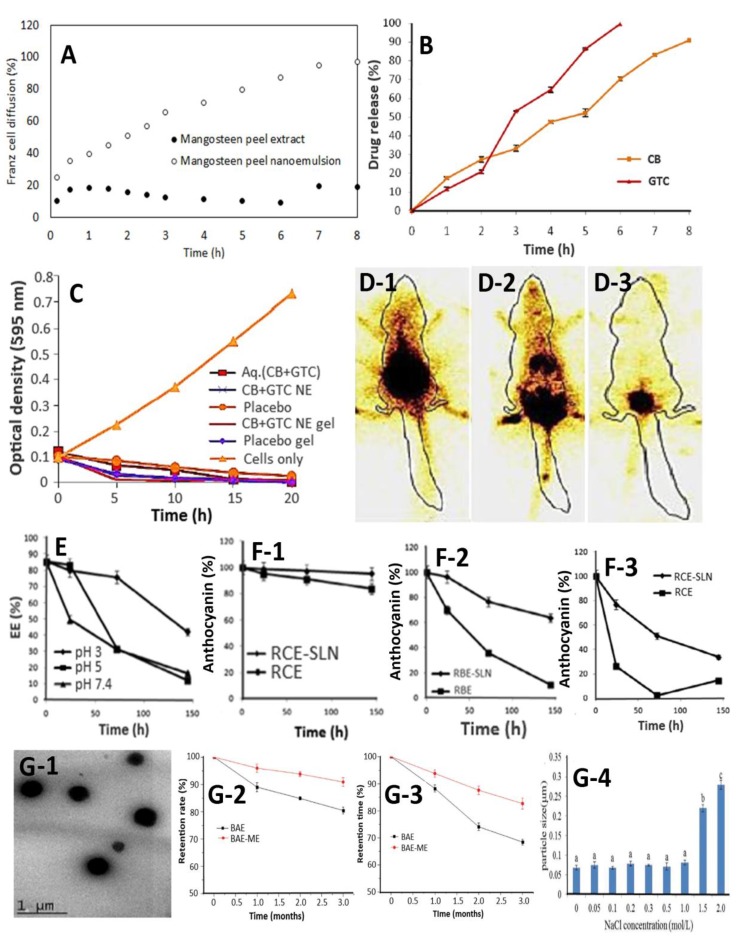Figure 3.
In vitro and in vivo evaluation of anthocyanin nanoemulsion prepared from several natural fruit/vegetable extracts. Panel (A), Anthocyanin nanoemulsion from mangosteen peel showing higher diffusion in in vitro Franz cell diffusion test than extract (topical skin application). Panel (B), cranberry and green tea catechin extracts nanoemulsion gel (CB + GTC NE gel) showing high in vitro release of CB and GTC into simulated vaginal fluid. Panel (C), CB + GTC NE gel showing faster growth inhibition of Escherichia coli compared to other treatments. Panel (D1–3), Gamma scintigraphy images of female Sprague-Dawley rats after oral (D1) and intravaginal (D2) administration of radiolabeled CB+GTC NE gel (99mTc-CB/GTC-NE gel) as well as intravaginal administration of radiolabeled CB+GTC aqueous mixture (99mTc-Aq.CB+GTC) (D3). Panels (E) and (F1–3), stability of red cabbage anthocyanin-based solid-lipid nanoparticles (RCE-SLN) as affected by different pH (E) and temperatures at 25 °C (F1), 45 °C (F2), and 60 °C (F3) during storage for six days. Panel G1-4, TEM image (G1) of anthocyanin microemulsion prepared from blueberry extract (BAE-ME) along with its stability as affected by storage over a three month period at 4 °C (G2) and 25 °C (G3) as well as different ionic strengths (G4) (adapted with permission from references [54,58,59,60]).

